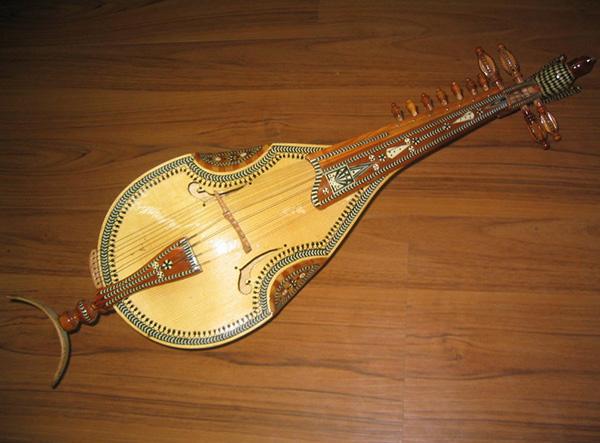The historical development of Husitar
Husitar, a Uyghur stringed musical instrument. (Husitar) means (sweet strings). Popular in Urumqi, Xinjiang Uygur Autonomous Region and other places.

The shape of Husitar is very similar to the popular "Sarangji" in ancient India and Nepal. Some scholars believe that they have the same origin as the violin, and the escital may have evolved from the Sarangzi.
For a long time, Asitar has been annihilated by the clouds of history, and it is an ancient folk musical instrument of the Uyghur people in Xinjiang that has long been lost. Since the 1970s, Turxun Jiang, a well-known Uyghur instrumentalist and a reformer of folk musical instrument production, has revived it and made it a Uyghur series of stringed instruments with excellent performance.
Turxun River grew up in the Bachu area of southern Xinjiang. This is the hometown of the Duolang people who are good at singing and dancing. He has loved the production and performance of folk musical instruments since he was a child. In the past, he played instrumental music in the Xinjiang Military Region Song and Dance Troupe and the Turpan Art Troupe, and was later transferred to the Xinjiang Art School to teach.
As early as the early 1950s, he discovered the long-lost stringed instrument Asital in the Buddhist murals in the Kizil Thousand Buddha Caves in Xinjiang. Later, he saw pictures of similar instruments in the Autonomous Region Museum, which inspired him to copy and improve this instrument. interest in musical instruments. Since he began to study and imitate it in the mid-1950s, he first made the bass escital in the 1960s. After 20 years and thirteen trials, he finally made the first high-pitched escital in 1975. In the following year, he appeared on the music stage in the form of a solo in the regional cultural performance.
The original alcitar has eight strings and the head is decorated with parrots; the new one has eleven strings and the head is decorated with lark. There are also corresponding improvements in the production materials and playing skills of the musical instruments, which are the crystallization of the diligence and wisdom of the Uyghur people. Chairman Saifuding also proposed to change the name of Asitar to the Uyghur language "Husitar".
Husitar has been continuously developed. Because it has seven resonating strings, it was mostly used for solos in the past, but in ensembles, the resonating strings will affect the harmony effect. After listening to the opinions of experts and performers, and through repeated experiments, Turxunjiang successfully developed four kinds of Husitar with no resonance strings: treble, alto, bass and double bass, making it a series of stringed instruments. .
 渝公网安备 50010702504639号
渝公网安备 50010702504639号